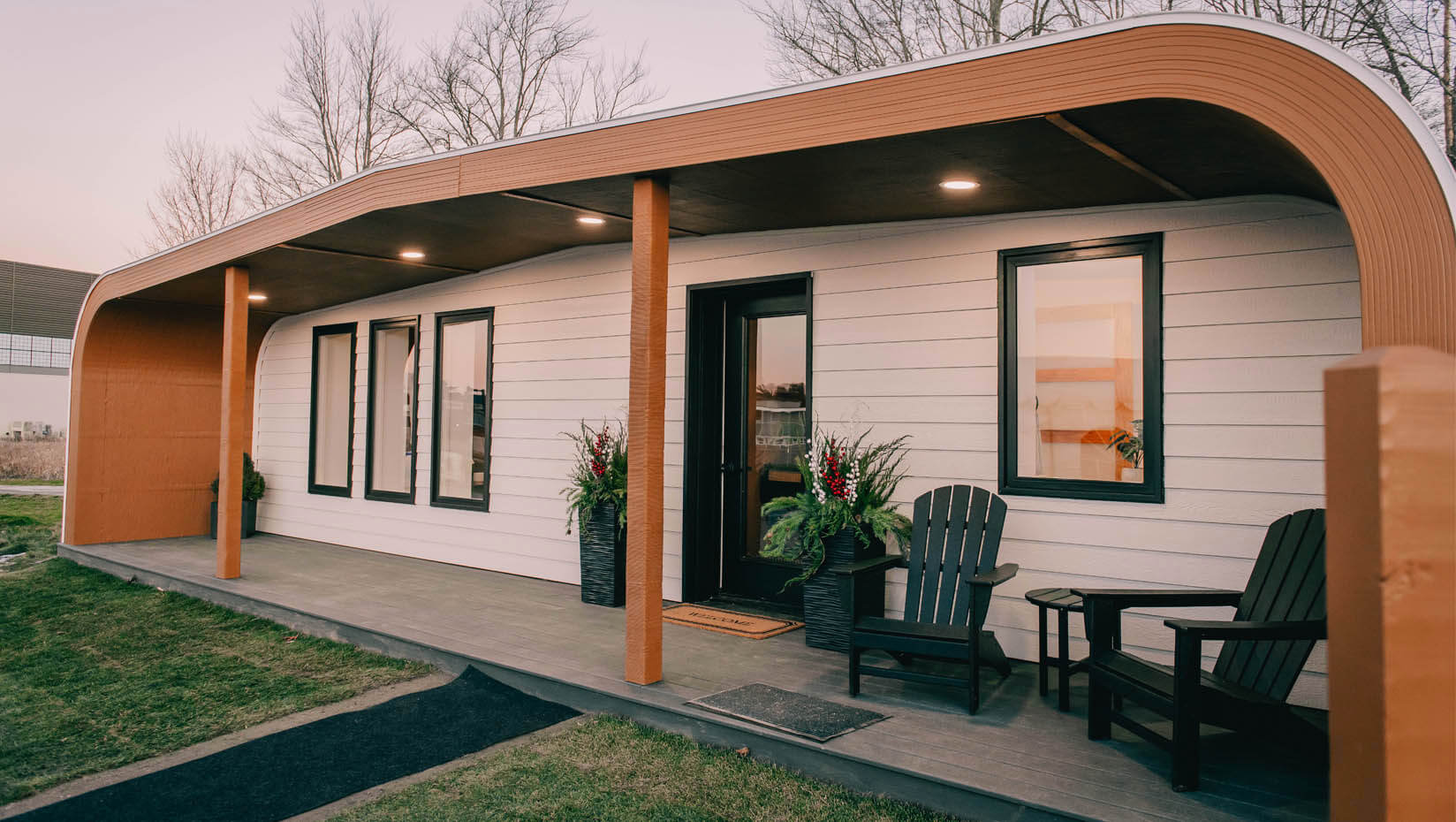Biohome3D: University of Maine prints recyclable house from biological materials


With the Biohome3D, the University of Maine presents the first 3D-printed house that relies on biological and recyclable materials. So far, however, the demonstration building has only one floor.
Unless you rely on mass-produced components, building a house is usually tedious and expensive. A solution to this problem is said to be 3D printers, which in the future should be able to produce entire houses or at least individual house segments according to the customer’s ideas. There are several corresponding development projects, but these mainly use concrete as the printing material. the University of Maine now claims to have made a breakthrough by being the first to print a house using organic and fully recyclable materials.
wood instead of concrete
According to the corresponding statement from the university, the first “Biohome3D” created in this way is around 56 square meters in size. The floor, the walls and the roof are said to have been completely printed, with wood fibers and a “bio-resin” allegedly being used as the starting material. Compared to concrete, this should result in lower CO₂ emissions, since the carbon in the wood fibers was previously removed from the atmosphere.
The basic printed structure of the house consisted of four modules, which were said to be connected to form a full-fledged house within half a day. In addition, a single electrician should only need two hours to connect the small house. On the other hand, there is no talk of other important trades, so in reality the assembly should take a little longer. It should also be noted that the Biohome3D with only one floor and the said 56 square meters is more like an apartment than a house.
Just as exciting: Formify: 3D printed mouse to revolutionize gaming peripherals
Nevertheless, the University of Maine is already fueling numerous expectations in its announcement: The announcement addresses current problems on site. These include in particular a lack of materials and labour, which in turn leads to a shortage of housing and high housing costs. The Biohome3D is supposed to remedy this in the future, even if the printing of large residential complexes and less of small individual houses will probably be necessary. Of course, the approach can still be expanded in the future, and for the time being the process is not intended for the mass market anyway. Apparently, the properties of the first prototype should first be examined.
Source: University of Maine via golem
Reference-www.pcgameshardware.de